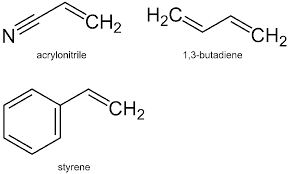The use of thermoplastics in creating tons of everyday utility products is not new. Their large scale usability is mainly because of their ability to turn to liquid (and not burn) after reaching a certain temperature. ABS plastic, for example, can be liquefied at 221 degrees Fahrenheit and then cooled and reheated again.

This single property makes thermoplastics like ABS a great material for modern molding processes like plastic injection molding.
Before the use of thermoplastics, thermosets were used for various manufacturing processes. However, thermosets have a serious limitation. Heating a thermoset once brings about an irreversible chemical change which causes them to set.
A second heating of the thermoset plastic makes them burn. The recyclability is hence zero as compared to thermoplastics like ABS which can be repeatedly heated and remolded into desired shapes.
What is ABS Plastic?
ABS plastic or Acrylonitrile Butadiene Styrene is an amorphous, impact-resistant, opaque thermoplastic that is widely used in the plastic industry. As the name suggests, the thermoplastic is made out of three monomer units:
- Acrylonitrile: A synthetic monomer produced from ammonia and propylene.
- Butadiene: A monomer that results as a bi-product along with ethylene when produced from steam crackers.
- Styrene: A monomer produced by dehydrogenation of ethylbenzene.

Each monomer unit lends separate properties to the thermoplastic. While Acrylonitrile contributes to its high chemical and heat resistance properties, Butadiene adds strength and toughness and Styrene offers properties like rigidity and processability.
Key properties
ABS plastic is considered very strong structurally. This makes it an ideal choice for various applications that need strong and stiff plastic that is resistant to external strength impacts. It is highly used in applications like protective housings, camera housings, stiff packagings, etc which need to be structurally sturdy.
Physical properties of ABS plastic:
Following are the key physical properties of ABS plastic:
- High impact resistance
- High rigidity
- Heat and chemical resistance
- High electrical insulating properties
- Abrasion and stain resistance
- Structural/Dimensional stability
- Good surface brightness
- Weldability/Moldability
Chemical properties of ABS plastic:
Following are some important chemical properties of ABS thermoplastic:
- Chemical formula: (C8H8)x· (C4H6)y·(C3H3N)z)
- Excellent resistance to acids and alkalis (in diluted form)
- Reasonable resistance to aliphatic hydrocarbons
- Liquefying temperature (glass transition): 105 °C (221 °F)
- Injection molding temperature: 204 – 238 °C (400 – 460 °F)
- Poor resistance to alcohols, halogenated hydrocarbons, aromatic hydrocarbons.
